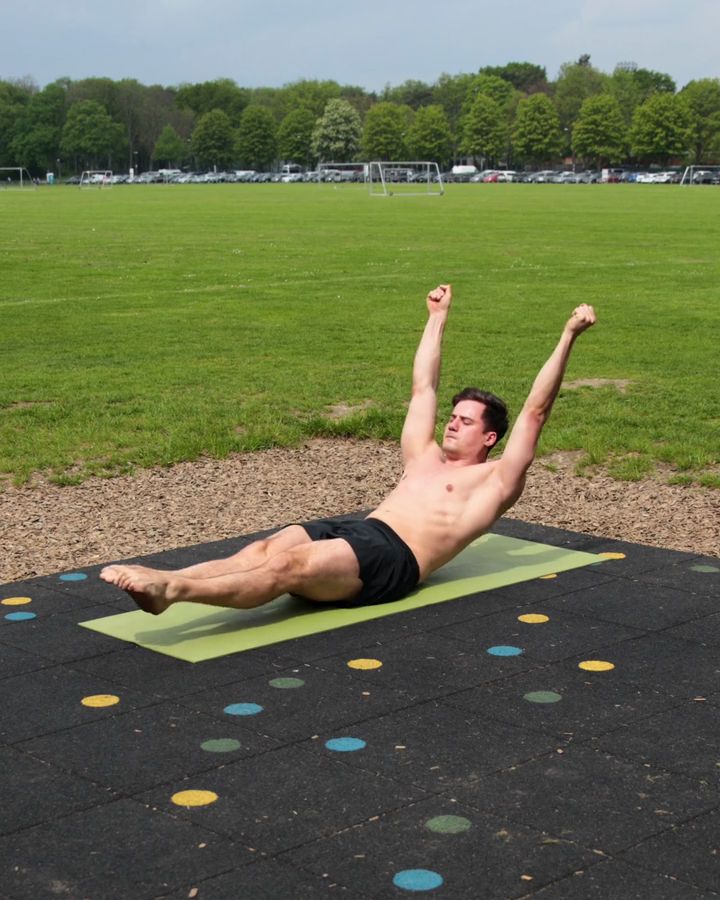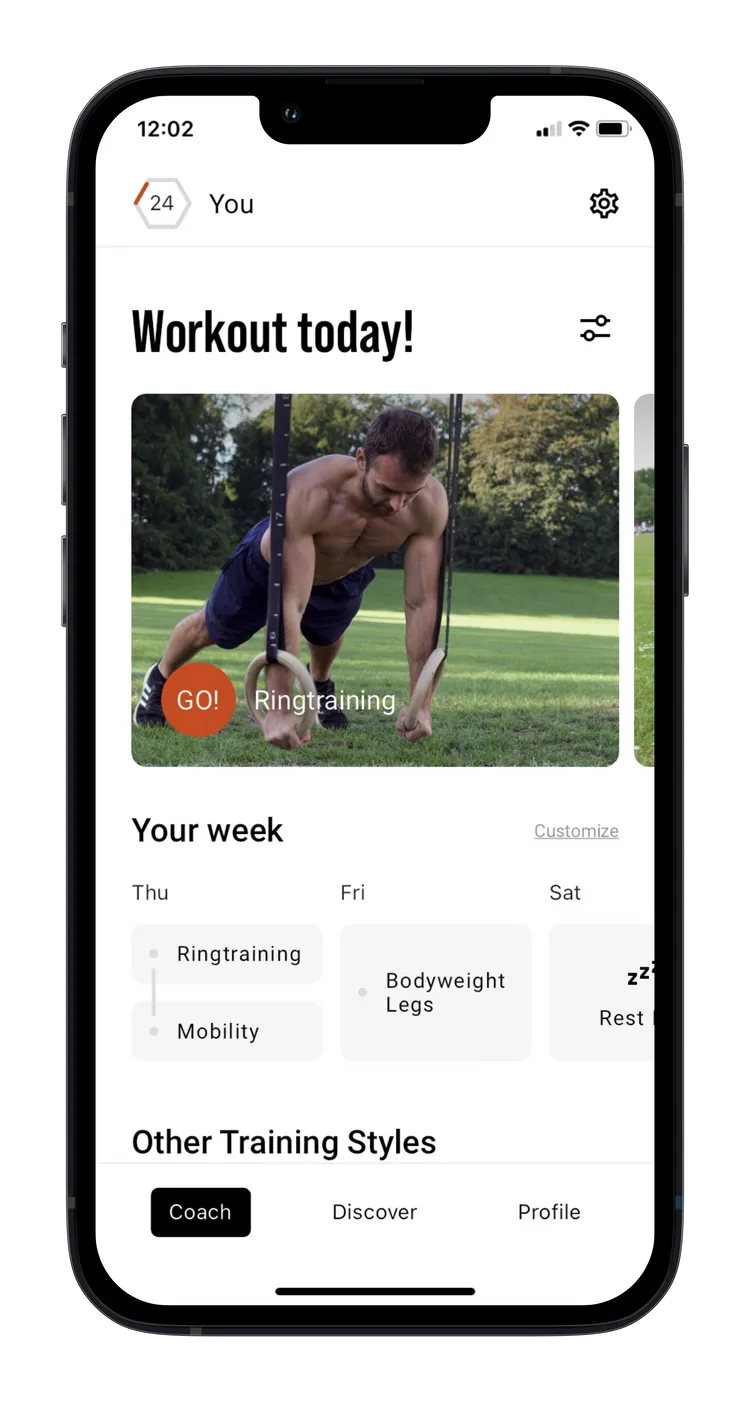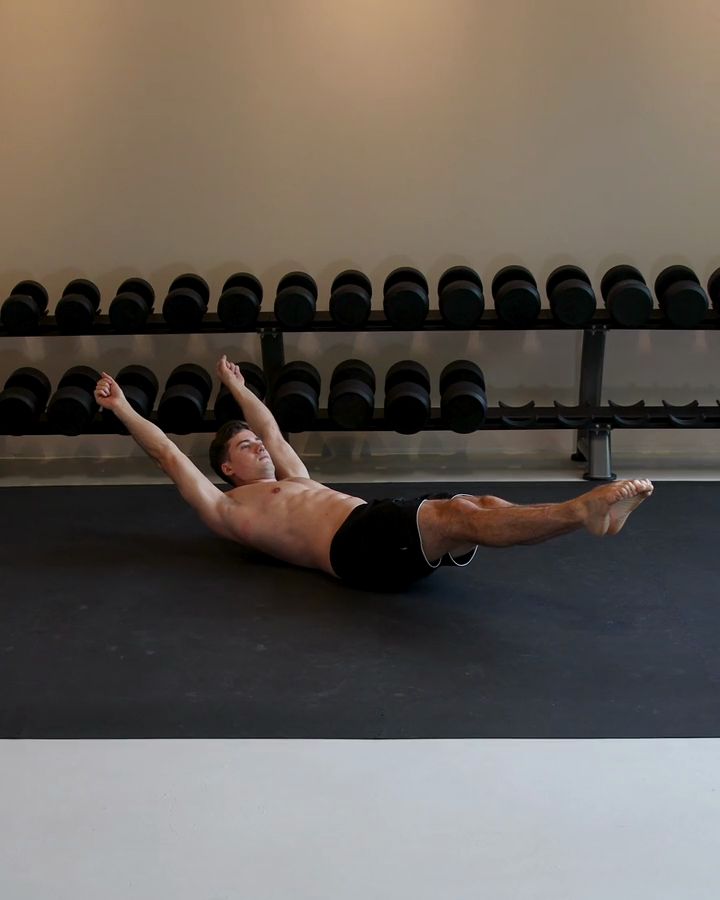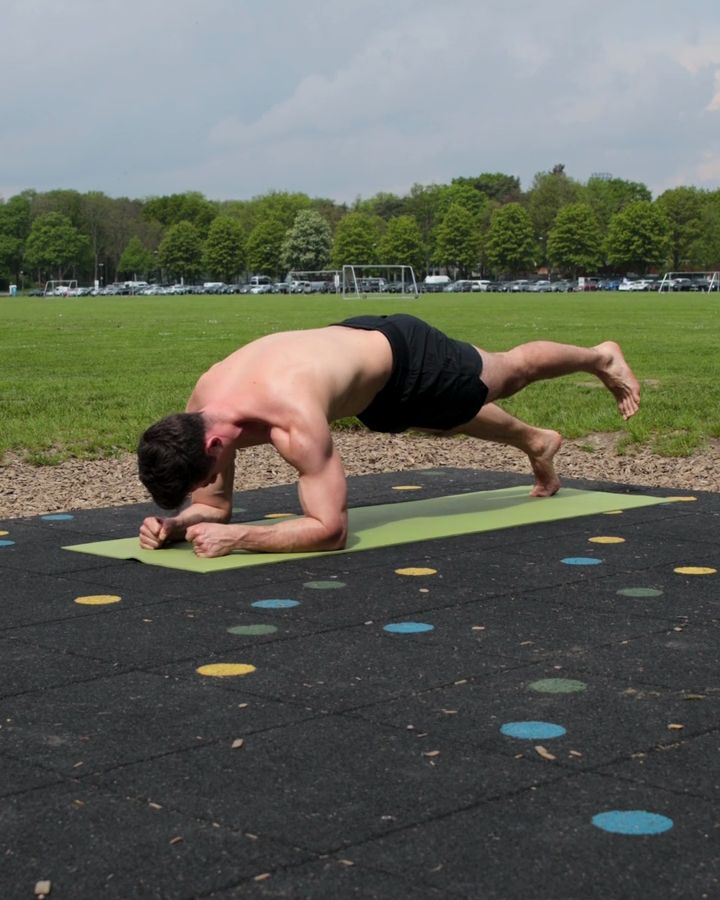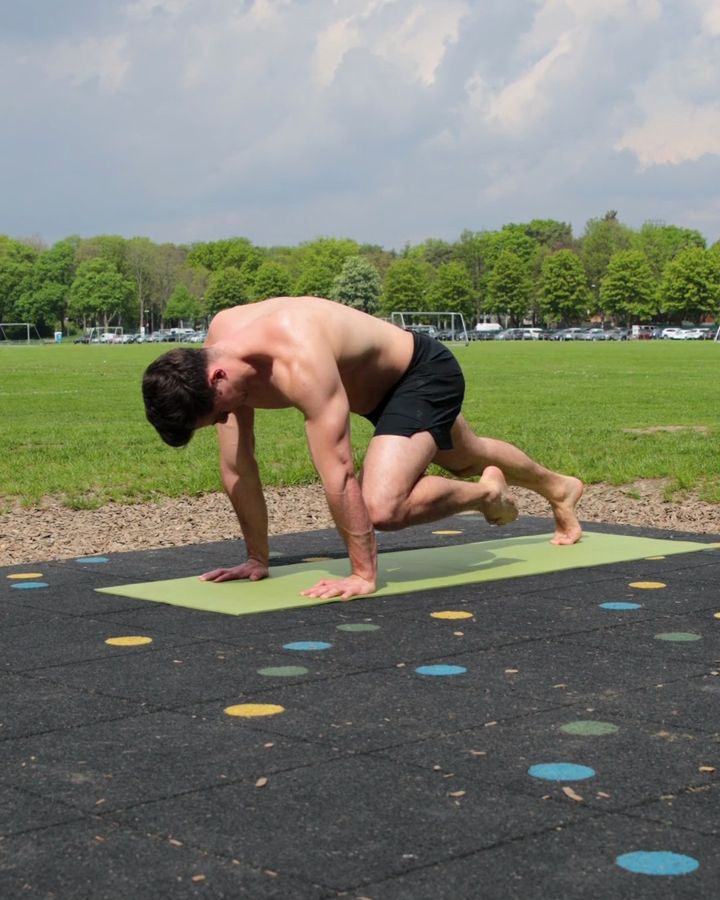Hollow Body Rocks
Hollow body rocks are an effective core exercise in which the body performs rocking movements while maintaining a stable, curved position. This exercise primarily strengthens the abdominal muscles and is especially suited for sports like calisthenics or gymnastics, as it requires strong body tension and control. A good preparatory exercise is the hollow body hold, which is also often considered a foundation for handstand training.
Necessary equipment
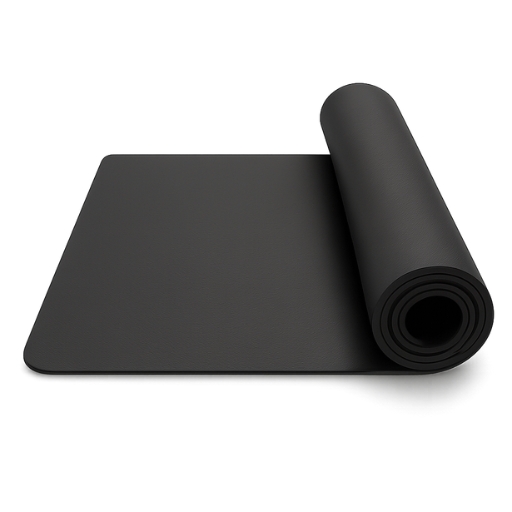
Hollow Body Rocks - the correct execution
- Start lying on your back in the hollow body position
- The arms are extended in line with the upper body
- Make sure the core is firm and press the lower back down into the floor (PPT)
- Keep the legs in the air
- Rock your body and alternate the ground contact between glute to shoulder blades
The exercise Hollow Body Rocks is intended to be used as a hypertrophy exercise.
Which muscles are trained by Hollow Body Rocks?






Primary trained muscles for Hollow Body Rocks
Abs - The rectus abdominis, also known as the "abs," runs vertically along the front of the abdomen. It is responsible for bending the torso forward, such as during sit-ups, and lifting the pelvis. This muscle stabilizes the torso, supports the spine, and helps maintain good posture.
Secondary trained muscles for Hollow Body Rocks
Glutes - The gluteus maximus is the large muscle in your buttocks. It is important for extending the hip, moving your leg backward, and stabilizing the hip joint.
Similar exercises to Hollow Body Rocks
Hollow Body Hold
In the hollow body hold, you lie on your back and tense the entire body while pressing the lower back firmly into the floor. This static exercise primarily targets the abdominal muscles and is especially popular in gymnastics and calisthenics to improve core strength.
A similar exercise is the forearm plank, where the abdominal and core muscles are also strengthened through static holding work.
Plank Leg Lifts
Plank leg lifts combine the core stability of the classic plank with a dynamic leg lift, which engages not only the abs and back muscles but also the glutes and leg muscles more intensively. By alternating leg lifts, balance is challenged, and the core is activated more deeply. Compared to the forearm plank, this variation involves the lower body more, making the exercise more challenging and versatile.
Mountain Climbers
The mountain climber, also known as the running plank, is a versatile exercise that works the entire body, focusing on the arms, shoulders, quadriceps, and core. This exercise, which is especially suitable for beginners, is performed from the high plank or static push-up position by alternately bringing one knee to the chest and back, mimicking a running motion against the ground. Despite its apparent simplicity, the mountain climber engages the whole body and increases heart rate, making it an excellent addition to a morning workout, whether at home, in the gym, or even at the office.
This could also be interesting
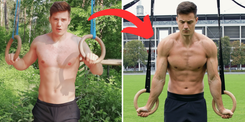
Calisthenics Body Transformation – How to Build a Strong, Lean, and Athletic Physique
Transform your body with Calisthenics! Build muscle, burn fat & achieve a shredded physique with bodyweight training. See real before & after results!

The Best Fitness Apps in 2025: Our Top 10 Recommendations
Don’t miss the best fitness apps of 2025: surprising favorites, free options, and perfect tools for your workouts. Find the ideal app today!
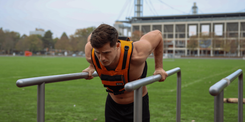
Complete Calisthenics Skills List – 40+ Exercises from Beginner to Pro
Which calisthenics skills should you learn first? And which ones will really help you progress? In this article, you’ll find a complete list of over 40 exercises – from the very basics to the toughest moves for professionals. Each exercise comes with instructions, so you can immediately integrate them into your training.
